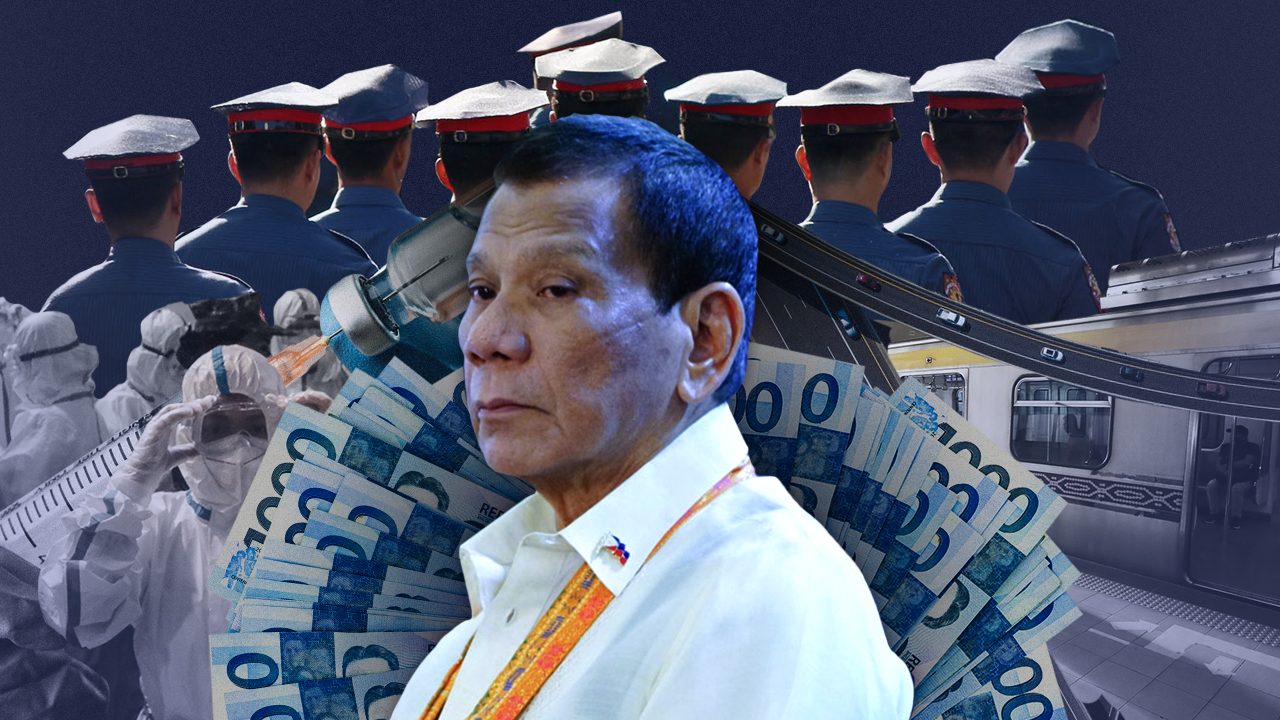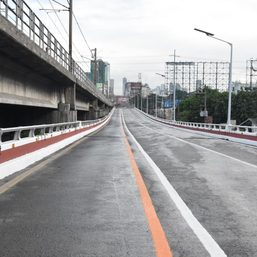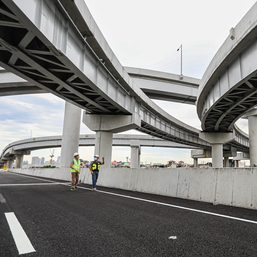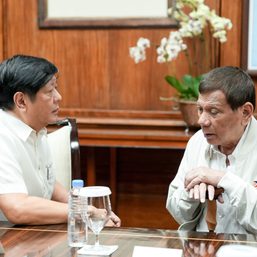SUMMARY
This is AI generated summarization, which may have errors. For context, always refer to the full article.

AT A GLANCE
- The proposed P4.5-trillion budget is the Duterte administration’s penultimate budget and it’s also its last full-year fiscal plan.
- Because it’s mandated by the Constitution, the education budget remains to be the largest, but infrastructure funds continue to register the biggest hike.
- Another runner-up in next year’s priorities – though quite alarming – is the steep increase in pension payments.
- Duterte’s health budget appears ill-prepared for a post-coronavirus nation.
President Rodrigo Duterte’s penultimate P4.5-trillion budget is significant for many reasons.
First, it defines the priorities of the government – the legacy programs and projects the Duterte administration will leave behind as 2022 elections approach.
Second, the proposed 2021 budget will indicate what’s in store for a nation still reeling from the effects of the coronavirus pandemic.
The proposed National Expenditure Program (NEP) for 2021 is 9.9% higher than this year’s P4.1-trillion General Appropriations Act (GAA) and is equivalent to 21.8% of the projected gross domestic product for the coming year.
Based on the expenditure program, the education sector has the biggest budget allocation, amounting to about P800 billion. This is in line with the Constitution’s mandate.
Beyond the education sector, the Duterte administration indicates as priority – as it has always been in the past 4 years – its centerpiece infrastructure program Build, Build, Build which is getting proposed funds amounting to P748 billion. Next to it is defense and public order which is getting close to P519 billion.
Meanwhile, proposed funds for the health sector only got a combined allocation of P212 billion – as if the coronavirus pandemic would soon be over.
2020 vs 2021 budgets
Public order, defense
For 2021, the Department of the Interior and Local Government and its attached agencies are requesting a total of P240 billion, with the bulk or P190.52 billion of the proposed new appropriations going to the Philippine National Police.
Meanwhile, the Department of National Defense is proposing at least P208.71 billion for next year. At least three-fourths or around P157 billion of the DND budget is lodged under the Armed Forces of the Philippines (AFP).
The reintegration program of the military was removed from the DND budget this year. Instead, P16.4 billion was allocated as “Barangay Development Fund” under the P28.83-billion Local Government Support Fund. Lawmakers feared that this multibillion allocation could be used in exchange for political favors and personal gains in the upcoming national elections.
In terms of projects, the Armed Forces of the Philippines (AFP) is investing in machinery and equipment for next year, with a P33-billion allocation for the modernization program. Another P5 billion is also lodged under the unprogrammed appropriations for this.
Apart from the AFP, the Philippine Army is also proposing P500 million more for transportation equipment, with an allocation of P1.1 billion for 2021. The Philippine Navy, meanwhile, is proposing about P490 million more, for a total of P1.422 million for transportation.
Speaking of modernization, the Philippine National Police (PNP) appears to be ramping up on digital monitoring as part of its crime prevention program. A total of P182.45 million was allocated for new information technology projects:
- PNP Intelligence Analytics Center – P12.553 million
- PNP Smart Camps – P111.219 million
- Establishment of PNP IT Center – P44.77 million
- Police Community Relations Management Information System – P675,000
- Establishment of Crime Laboratory Information Management System Portal – P9.533 million
- PNP Intelligence Operations Command, Control, and Communication Center – P3.7 million
Earlier in September, the PNP said it will monitor social media posts to keep an eye on quarantine violators. On Tuesday, September 22, social media giant Facebook took down AFP and PNP pages that habitually publish disinformation, but the two uniformed services denied responsibility for this. (READ: With anti-terror law, police-sponsored hate and disinformation even more dangerous)
On discretionary funds, the Office of the President’s P4.5 billion confidential and intelligence funds still constitute the largest share of the total pie. (READ: COA: Hard to trace how Duterte intel funds and anti-communist task force money were spent)
The total amount for confidential funds was reduced from P4.53 billion to P3.54 billion in 2021. While Duterte kept his allocations intact, some agencies got zero sums:
- Department of Information and Communications Technology (from P800 million)
- National Security Council (from P100 million)
- Congress of the Philippines (from P100 million)
- Philippine Competition Commission (from P5 million)
The Commission of Human Rights and the DND lost a significant amount of confidential funds as well. CHR’s allocation was slashed by P7 million from 8 million, and it is getting only P1 million for 2021.
While the DND’s P1.7-billion intelligence funds were untouched, it lost P14 million in confidential funds in 2021, leaving it with P23 million.
Ironically, the National Intelligence Coordinating Agency’s intelligence funds were cut by P200 million, leaving only 20.2 million for next year. PNP’s intelligence funds were also reduced by P62 million, from P867.9 million to P806 million.
Pension
Almost 3 years since the President signed the resolution increasing the salaries of police and the military in 2018, the budget for personnel services continued to gobble up a huge amount of proposed funds for these agencies.
The proposed allocation for police salaries has increased by 76% from 2017. In 2020, the authorized positions for the police force increased by over 11,000, to 225,510 from 214,410 in 2019.
For the military, the budget for salaries next year is 66% higher from 4 years ago. Only around 2,000 positions for soldiers were added from 2019.
As their salary increases, the pension benefits of retired personnel increase as well. The Pension and Gratuity Fund, which covers the retirement pay of all government employees, ballooned by 48.8% or P56.7 billion from this year’s P116.19 billion.
In 2019, the government paid at least P60 billion in pension benefits to retired soldiers and P43 billion to retired cops – or a total of P103 billion – from the P117-billion fund.
Without pension reform, Senate Minority Leader Franklin Drilon warned in 2019 that the DND could become a “department of pensioners.” Defense Secretary Delfin Lorenzana admitted at the time that the earlier proposed reform “did not sit well” with the active personnel.
The President, in several speeches, had spoken about the need to change the pensionable age of uniformed personnel from 56 to 60. Currently, a pension reform bill has passed on 3rd and final reading at the lower chamber. Its counterpart measure is pending at the Senate.
Infrastructure
In Duterte’s penultimate year, the budget of the Department of Public Works and Highways has skyrocketed to almost the P700-billion mark from P458 billion in 2017, the year the administration had its first full-year budget.
In 2021, the DPWH is expecting at least P666.47 billion in new appropriations – a whopping 54.86% equivalent to a P236.09-billion hike from its adjusted 2020 program.
DPWH was supposed to have at least P580 billion this year, but it was slashed to P430 billion to fund the coronavirus war chest. The government has introduced across the board belt-tightening measures, as allowed by the special budget powers provision in the Bayanihan to Heal as One Act.
The Bayanihan Act allows the Department of Budget and Management (DBM) to discontinue projects within the executive branch, and to use the savings generated for government’s coronavirus response.
Of the discontinued funds, around P135 billion was part of the coveted “For Later Release” local infrastructure projects. This appeared to be among the reasons behind brewing disagreement among congressmen who want these funded in 2020 and not next year.
These P135 billion worth of infrastructure projects are now part of the proposed DPWH budget – much to the congressmen’s dismay. Is this even possible if these funds are already part of the 2020 GAA? Lawmakers don’t think so as it would be tantamount to “double appropriations” or “reappropriations” which is unconstitutional, they said.
Asked to explain, the DPWH instead pointed to the Bayanihan Act allowing them to revive discontinued projects within the next two fiscal years.
Based on the NEP, DPWH’s P176.16-billion local program remains to have the largest allocation, followed by the network development program at P157.46 billion. Proposed flood control funds also increased to P125.87 billion.
Among the big ticket foreign-assisted projects, the Davao City Bypass Project has the largest budget for next year. The south and center sections and the Phase II of the bypass road project has a proposed allocation of P13.1 billion next year, including loan proceeds from the Japan International Cooperation Agency (JICA).
But Senator Panfilo Lacson flagged certain errors in the NEP, speculating that there must have been “a lot of haggling” between DPWH and legislators. The senator, citing Budget Secretary Wendel Avisado, said that the DPWH will submit to Congress “errata” to correct these errors.
Avisado confirmed to Rappler that the supposed errors in the DPWH’s proposed budget was due to the late submission of the department to DBM. Sources familiar with the budget process, however, said that submitting errata on public works projects has been the practice of the DPWH, especially if requests from legislators were not “accommodated earlier” by the department.
The budget for the year before elections (in this case 2021) is often referred to as an “election year budget.” National elections will be held in 2022, but funds for poll preparations are already included in the 2021 budget. The Commission of Elections will be getting P14 billion next year.
On the Department of Transportation (DOTr) side, the P107-billion railway program is being prioritized this year, as huge budget cuts were introduced in other programs.
The aviation program was the worst hit. From a P2.45-billion budget in 2020, it was slashed to a mere P1 million which could be used for construction or rehabilitation of aviation facilities.
Among the railway projects is the North-South Commuter Railway, which aims to connect Pampanga to Laguna via the Philippine National Railways. It received the largest allocation of P58.629 billion, while the rest got the following:
- Metro Rail Transit Line 3 rehabilitation project – P3.141 billion
- Metro Manila Subway – P34.601 billion
- PNR South Long Haul – P2.982 billion
In Duterte’s proposed budget, the long-promised Mindanao Railway is nowhere to be seen. DOTr Assistant Secretary Goddes Libiran told Rappler that the process of getting a project consultant is “ongoing.”
Among DOTr’s requests for budget revision, according to Libiran, is a specific line item for the Mindanao Railway. If it’s not granted, the DOTr can tap into the unprogrammed appropriations once the official development assistance from China is finalized.
Health, coronavirus
Because of the pandemic, the Department of Health’s budget for 2020 was adjusted to P102.9 billion, on top of the P48.41 billion it received from unprogrammed fund releases.
Next year, the DOH has a proposed budget of P127.77 billion, which is 24.17% or P24.8 billion higher than this year’s. Funds for corruption-ridden Philippine Health Insurance Corporation did not change from this year, having the same allocation of P71.35 billion.
Despite the increase in funds, the allocation for DOH programs looks like it’s still an inadequate budget for a post-coronavirus world. The World Health Organization has warned that given the timeline of the vaccine, the end of the pandemic may well stretch all the way to 2022.
The Alliance of Health Workers, which consists of unions of health workers, also pointed out that at least 23 hospitals will have to face budget cuts ranging from P4 million to P209 million, which could force them to increase laboratory costs.
Health Emergency Management and Epidemiology and Surveillance programs also got cuts worth P47 million and P3 million, respectively.
The President seems resigned to the fact that wearing a “mask” is the only thing that can be done to prevent coronavirus transmission, apart from waiting for a vaccine that won’t see the light of day until the second quarter of 2021 at the earliest.
According to the DOH, only some P13 billion will be spent for the ongoing coronavirus efforts of the department. The biggest spend – worth P5.26 billion – will be for the health system enhancement and pandemic response programs, which are funded by the Philippine government’s loans from the World Bank and the Asian Development Bank.
At least P2.67 billion will be spent for frontliners’ personal protective equipment and some P1.03 billion was allocated for GeneXpert COVID-19 cartridges. In anticipation of the anti-coronavirus vaccine, the government is proposing some P2.5 billion for that.
The DOH said that the P4.78-billion Health Facilities Enhancement Program (HFEP) will be used to buy equipment for 1,633 health facilities (P4.68 billion) and ambulances (P25 million), while the rest, or around P82 million, will be spent for monitoring and evaluation activities.
At the DOH budget hearing at the House of Representatives, Health Secretary Francisco Duque III appealed for a P10-billion hike in HFEP funds. The 50% slash from this year’s P8.38-billion HFEP budget will “significantly affect” the coronavirus response, the health chief said.
But insiders whom Rappler spoke with cautioned against additional HFEP funds, as these may be used as legislators’ “pork barrel” for the upcoming elections. State auditors discovered that several equipment purchased under the 2018 HFEP funds were “not found” during an audit visit. Even infrastructure projects had structural defects or were prematurely tagged as completed. – (To be concluded) Rappler.com
Part 2: In Duterte’s 2021 budget, Filipinos are on their own
Add a comment
How does this make you feel?


![[Time Trowel] Evolution and the sneakiness of COVID](https://www.rappler.com/tachyon/2024/02/tl-evolution-covid.jpg?resize=257%2C257&crop=455px%2C0px%2C1080px%2C1080px)




![[ANALYSIS] Investigating government’s engagement with the private sector in infrastructure](https://www.rappler.com/tachyon/2024/04/tl-gov-private-sectors-infra-04112024-1.jpg?resize=257%2C257&crop=435px%2C0px%2C1080px%2C1080px)
![[OPINION] Cities and public spaces should be for people first](https://www.rappler.com/tachyon/2024/04/imho-people-first-city-04132024.jpg?resize=257%2C257&crop_strategy=attention)


![[The Slingshot] Alden Delvo’s birthday](https://www.rappler.com/tachyon/2024/04/tl-alden-delvo-birthday.jpg?resize=257%2C257&crop=263px%2C0px%2C720px%2C720px)
![[EDITORIAL] Ang low-intensity warfare ni Marcos kung saan attack dog na ang First Lady](https://www.rappler.com/tachyon/2024/04/animated-liza-marcos-sara-duterte-feud-carousel.jpg?resize=257%2C257&crop=294px%2C0px%2C720px%2C720px)
![[Newsstand] Duterte vs Marcos: A rift impossible to bridge, a wound impossible to heal](https://www.rappler.com/tachyon/2024/04/duterte-marcos-rift-apr-20-2024.jpg?resize=257%2C257&crop=278px%2C0px%2C720px%2C720px)

There are no comments yet. Add your comment to start the conversation.